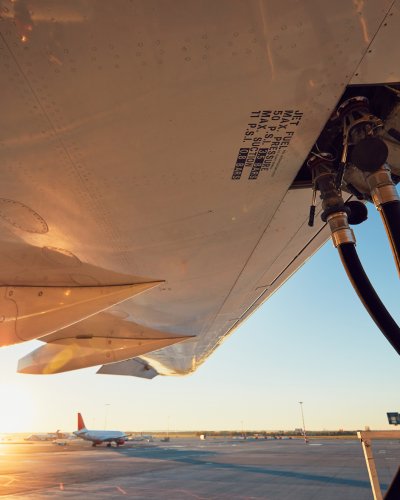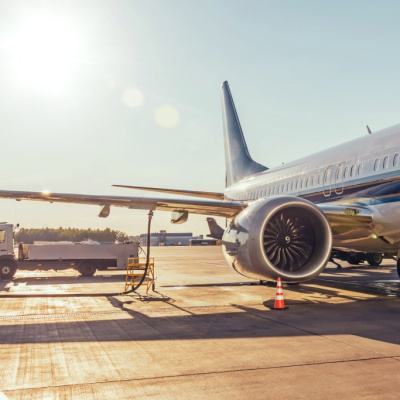Sustainable Aviation Fuels and Alternative Propulsion Systems
The most commonly used aviation fuel is kerosene, so-called Jet A-1, which is produced from petroleum. Its combustion produces CO2, water vapor, nitrogen oxides, soot particles and aerosols. Since kerosene is still indispensable on most routes today, research is being conducted into ways of producing kerosene from non-fossil sources. There are various production processes for these "Sustainable Aviation Fuels" (SAF), including Power-to-Liquid, HEFA and Alcohol-to-Jet.
In the Power-to-Liquid (PtL) process, renewable energy from wind or sun is converted together with hydrogen and CO2 into a synthesis gas. The Fischer-Tropsch process is then used to produce kerosene. Since the combustion of such fuels releases only as much CO2 as was captured during production, it is referred to as CO2-neutral fuel.
However, kerosene can also be produced from biomass. For the HEFA route (Hydroprocessed Esters and Fatty Acids), fats and oils from energy crops such as rapeseed, jatropha or algae, as well as from used fats (e.g. used cooking oil), are converted into fuel by means of hydrogenation and refining. In the Alcohol-to-Jet (AtJ) process, on the other hand, kerosene is produced from biogenic waste and residual materials. These are first fermented into alcohol and then further processed into kerosene by thermochemical reactions.
But even with synthetic kerosene, of course, it is not possible to fly CO2-free. Research is therefore focusing on electric propulsion systems that are powered either directly by electricity from renewable sources or by fuel cells using hydrogen. Smaller aircraft can already be operated purely electrically. However, kerosene will probably still be needed for long-haul flights.

